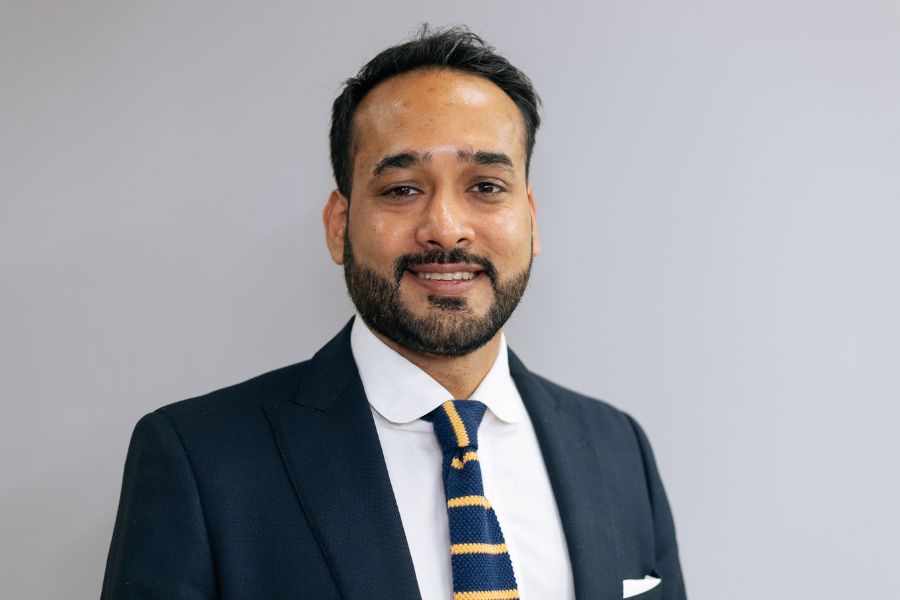Technology is at the core of neobanking
Mayank Goyal, the founder & CEO of moneyHOP, India’s first cross-border bank, explains that while neobanks are typically associated with fintech organizations, they would look at the more traditional problems and would propose a technological way of solving it.

IBT: What is the story behind the germination of moneyHOP, India’s first cross-border neo bank? What impact did the pandemic have on the company’s 3 year journey?
Mayank Goyal: While I was studying and later working in the investment banking sector in London, I realized that I was paying not only 12% on a collateralized education loan, but 5% on remittance fee too.There were several shortcomings associated with currency exchange too – for example, the tedious paperwork required, expensive exchange rates and so forth.
Although there was a lot being done in the domestic payment space in India since 2019 with UPI and various other companies associated with it, the cross-border payment and remittance system did not see much improvement. The larger public sector banks were not catering to the needs of an average millennial who wanted to travel abroad, live in different parts of the globe but didn’t necessarily want to buy a house on mortgage.. Their needs of instant gratification, convenience and transparency were not being catered to.
That was when I decided to relocate to India to establish moneyHOP as a one-stop platform enabling seamless international banking for Indian millennials. It is a company that caters to cross-border banking and is a customer-centric technology-enabled platform.
IBT: How is neo-banking different from digital banking and what are the factors contributing to the former’s growing popularity in the country? What advantages does neobanking offer vis-a-vis traditional banking?
Mayank Goyal: Neobanking literally translates into “new bank”, a new way of doing banking. Its origin can be traced back to the early Fintech companies of Europe. It is slightly different from the traditional banking structure because back in the day and even now in some countries, the state of the bank is determined by how many high street branches they had. Leasing a place, having people operating the place and so on needed a lot of capital.
There came a slight shift in how neobanks were looking at this problem because the idea was to be able to service customers or users who were also evolving and becoming acquainted with smartphones, cheaper data and so on by making use of DIY perspective and technology. While neobanks are typically associated with Fintech organizations, they would look at the more traditional problems and would propose a technological way of solving it, be it better customer service or digital mechanisms like chat bots, WhatsApp support, 24X7 updation, the use of AI to better profile the customer or propose more customized solutions. Essentially, technology is at the core of the solution that are being offered.
IBT: Given that neobanking is still in its nascent stages in the country, what teething troubles do they face?
Mayank Goyal: The primary concern has been the trust factor. In India, people like to visit branches and talk to people. So non-availability of a branch where you could walk in and make a complaint has sometimes resulted in people having some trust issues. Even though most of the people in the metropolitan cities in India are digitally native and smartphones savvy, people who belong to rural areas are not necessarily very tech savvy. To be able to cater to those customers can be slightly challenging.
Also, even if RBI is putting together a lot of structural framework and guidelines to legitimize neobanking, the industry does not have the necessary guidelines which results in having much more dependency on the bank. There are certain organizations which use the NBFC as the parent organization and operate under that. Other organizations such as moneyHOP would work in collaboration with a bank where we would provide the technology and agility and the bank would essentially have the owners having license and framework in place and we would collaboratively build valuable solutions to the end clients. We hope to overcome these shortcomings and see much more growth in the coming years.
IBT: What growth strategy did you follow to combat customer inertia? What business module does moneyHOP follow?
Mayank Goyal: Though a lot of businesses were disrupted because of COVID-19, moneyHOP was able to gain good traction on the cross-border payments and remittances. The company saw that a lot of people were apprehensive of going to the branches and physically filling a bunch of forms. In such testing times, moneyHOP was providing a solution where the customers could remit money while sitting within the comfort of their homes in an entirely paperless, presence-less, cashless mechanism. The customers were more than happy to come back to us because they found value when they first used our solutions.
The business model around which we operate is based on the belief that providing value to the customer is of utmost importance. We have a mobile application and a card product. So, every time a customer uses our card abroad or in India, we end up with an interchange fee on that. We also make some money when the customer holds cash in our bank accounts. These are some of the revenue streams that we work around.
What regulations do you follow to ensure that the cross border transactions of customers are secure?
Mayank Goyal: Security and compliance will have some overlap but there are two different spheres to look at. On the compliance side, we are regulated by the RBI and have a Full Fledged Money Changing license (FFMC) and make sure that every transaction that is made by moneyHOP is under the LRS framework. The company uses the digital mechanism of NSDL database for PAN, UIDAI server for AADHAAR, passport authority for passport or voter ID card. A lot of APIs are used to make sure that the person is indeed who he or she is claiming to be.
We also make sure that the customer is well within the US$ 2,50,000 per person per year limit laid out by the RBI and the LRS scheme. A 256-bit encryption is used to ensure security. We use certain RBI regulated bodies to make sure that our InfoSec is appropriately in place. When the data is being transmitted over the network, it is encrypted both at rest and in transit.
IBT: In your opinion, what is the potential of cross-border e-commerce?
Mayank Goyal: As a market, India is a large country with a lot of consumers and retailers. With about 50 million MSMEs and tech savvy consumers, distributers and retailers, people want to do business in the Indian and foreign market as well. About US$ 500 billion to US$ 600 billion worth of transactions are happening in the business segment, out of which, the B2B segment is about US$ 240 billion, while the B2C part of it is about US$ 280 billion. Out of this, about US$ 170 billion is services and US$ 70 billion is products. This already huge market increased by 46% during the pandemic according to some sources and is certainly exploding.
What needs be done now is to make sure that the right regulatory framework is there for new companies to build solutions which the MSMEs can adopt to provide better service to their customers, like the OPGSP framework of RBI. The market is certainly going to explode and everybody in the ecosystem is quite excited to service this new age MSMEs and new age consumers to have better user experience on the m-commerce site which is a natural extension to e-commerce. We at Moneyhop are really very excited to closely follow this market and revolutionize the cross-border banking experience.
Mayank Goyal is the brain behind MoneyHop, India’s first cross-border neo bank offering full-stack global banking solutions catering to the global aspirations of the Indian millennials. As the Founder and CEO of the company, he spearheads its vision of revolutionising banking for millennials and becoming an aggregator of financial services where the consumer’s financial needs can be addressed from a single touchpoint. *Views expressed are personal.













Leave a comment